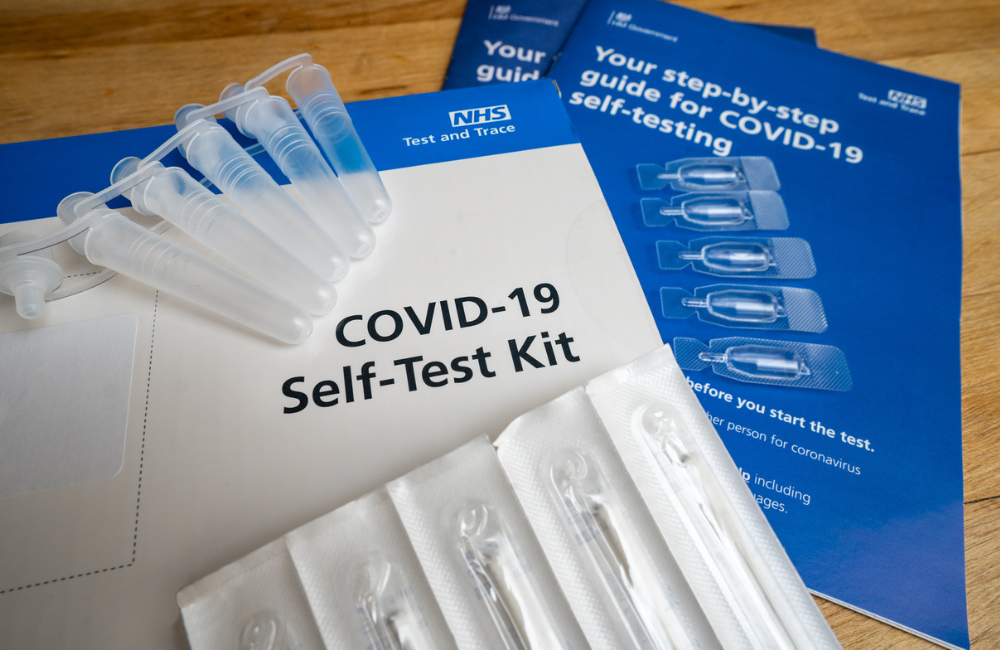NIH is Accelerating At-Home COVID-19 Testing to Improve Data Insights
Success in the RADx Program and at-home COVID-19 testing is leading to improved data collection and analysis.

The National Institutes of Health is expanding digital integration of COVID-19 testing by building upon existing initiatives, like its Rapid Acceleration of Diagnostics (RADx) Program and at-home testing programs, to improve interoperability, data insights and patient outcomes.
“The concept is that all of these different types of health records will be able to reside in a personal health record, and with the individual’s permission, to allow that person to relay that information… so there’s an accurate record of who’s testing and what those results may be,” Dr. Krishna Juluru, presidential innovation fellow (PIF) at NIH, said during ONC’s Tech Forum.
RADx is a federal initiative, led by NIH, to help expand the number of tests and types of tests available during the COVID-19 pandemic. RADx created programs that will make it possible to rapidly scale-up testing across the country and enhance access to those most in need. Newer technologies offer patient and user-friendly designs that work with cellphones to lower cost and increase accessibility both at home and at the point of care.
As part of its at-home COVID-19 testing initiative, NIH developed a mobile device, which allows individuals to be given instructions on how to take a COVID-19 test, capture test results and provide symptom surveys. The agency is enabling a variety of other mechanisms for capturing various forms of health data, which can then be added into state and federal health systems.
NIH is developing standards-based communications and centralized data systems to reduce barriers for test manufacturers and app developers in reporting test results. Juluru explained that the agency wants standardized mechanisms to drive greater consistency with taking the test, reporting results, and then having that data seamlessly flow from the server to its destination.
“There also needs to be a compatibility of receiving systems. We need to acknowledge that we can develop our technologies but finally when it makes it to its last stage, that those receiving our data are able to receive it in a proper way,” Juluru said.
“My job was to look into how we communicate and get a test result from that mobile device to the state and federal health record,” Juluru said. “The Test at Home Study [evaluated] the feasibility, usability and utility of serial at-home testing when paired with smartphone applications.”
During the study, NIH asked participants to take daily, at-home COVID-19 tests for two weeks and use the app, which was optional, after the first day to report results. The app provided functionalities like test reminders, test instructions, surveys and result capture.
NIH had 209 participants enrolled, and more than 90% of the participants tested and used the app at least once. The agency reported that 4 in 5 used the app to test and had results verified at least half of the study days, and less than 5% experienced difficulties with the app or the test.
“There was a very favorable result in using an at-home test and an at-home mobile device to perform this diagnostic effort,” Juluru said.
NIH’s Test at Home Study also provided insights into some of the challenges and barriers the agency faced in collecting and analyzing testing data. One of the largest difficulties the agency faced was understanding human behavior, like how participants took the COVID-19 tests and their comfort levels with taking the tests and technology.
The agency also faced challenges with reaching underserved populations. The technologies that NIH used in the study required participants to have a mobile device and internet connection, which created barriers for certain demographics. NIH is currently exploring new avenues to bring innovative health services to these populations.
“Mobile applications reporting to state health systems has been successfully deployed in two states and additional states are to follow,” Juluru said. “What’s impressive to me is the ability to send test result data from a mobile device all the way downstream to a health system.”
Moving forward, NIH is prioritizing focused studies to better understand human behavior, incentives, app usability and reporting practices. The agency is also looking to move its draft reporting specs through to a balloting process.
“This is aspirational, but we really want to develop and mature the concept of the personal health record where people can aggregate their health information and they have control over where that goes,” Juluru said.
This is a carousel with manually rotating slides. Use Next and Previous buttons to navigate or jump to a slide with the slide dots
-

How Agencies are Upskilling the Workforce in AI
Federal officials are putting in place new training and education methods to ensure its overall workforce understands the technology.
3m read -

Building Better Data Governance Across FDA
The agency is using emerging technology to tackle its data challenges.
19m listen -

Strategies for Effective Data Modernization
Data is the lifeblood of critical decisions and streamlines operations across the government, but many agencies struggle with inconsistent standards.
33m watch -

CDC Updates Public Health Data Strategy
Accelerating data sharing through capabilities like electronic case reporting make up a large portion of the new two-year plan.
3m read




